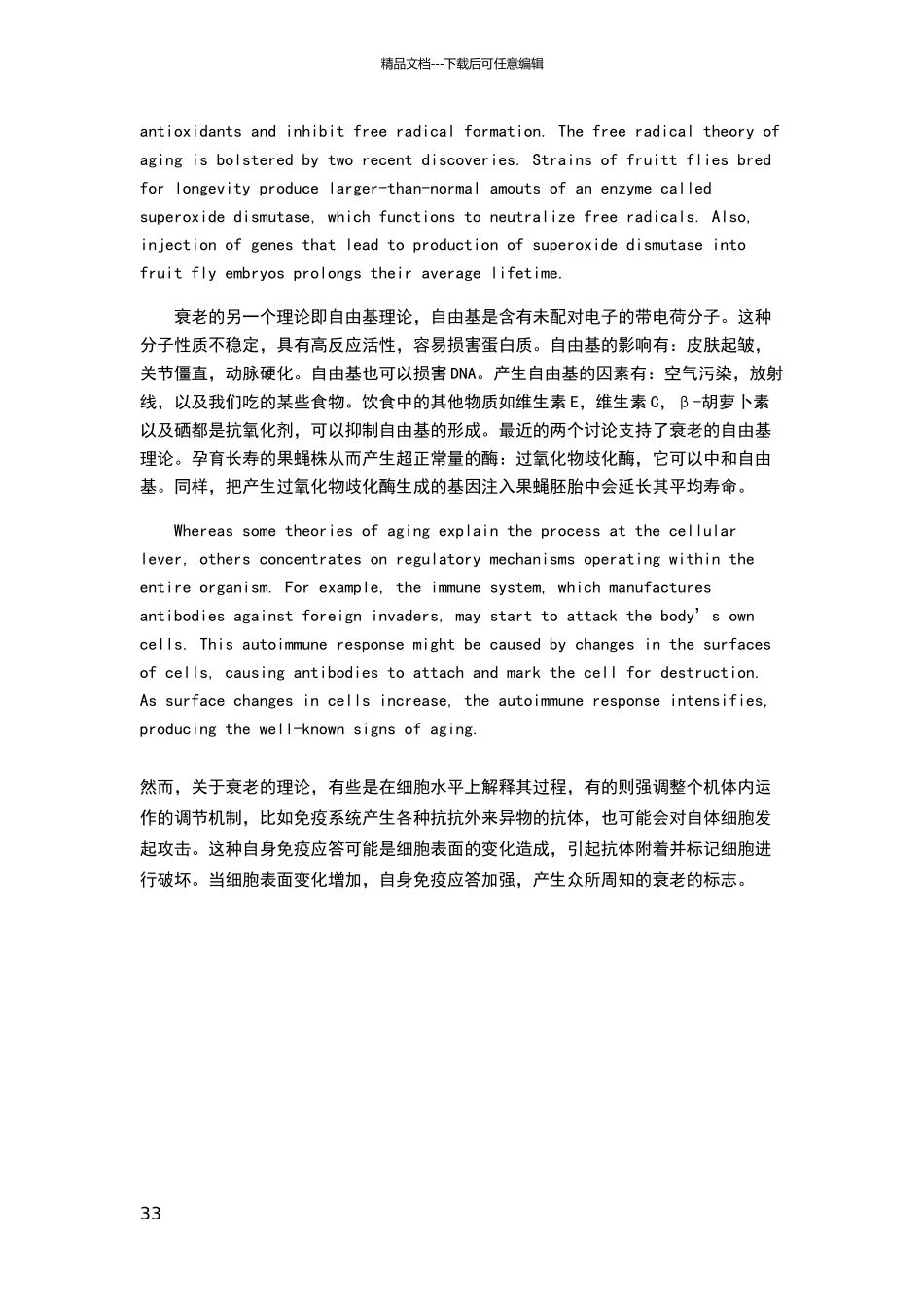精品文档---下载后可任意编辑Unit2. Cells and AgingAging is a normal process accompanied by a progressive alteration of the body’s homeostatic adaptive responses; the specialized branch of medicine that deals with the medical problems and care of elderly person is called geriatrics.衰老是一种正常的生理过程,伴有机体内环境稳定适应性应答的进行性改变。讨论老年人的健康问题和保健的一门特别医学分支被称作老年病学The obvious characteristics of aging are well known; graying and loss of hair, loss of teeth, wrinkling of skin, decreased muscle mass, and increased fat deposits. The physiological signs of aging are gradual deterioration in function and capacity to maintain a constant internal environment (homeostasis) in response to changes in temperature, diet, and oxygen supply. These sings of aging are related to a net decrease in the number of cells in the body and to the dysfunctioning of the cells that remain.衰老的明显特征众所周知:头发花白和脱落,牙齿脱落,皮肤起皱,肌肉减少,脂肪积存增加。衰老的生理征兆是机体对环境刺激反应的功能和能力的逐渐退化如同维持机体内环境稳定来应对温度,饮食和氧气供应改变的能力减退一样,机体新陈代谢也减慢了。衰老的这些迹象与机体中细胞数目的净减少以及存余细胞的功能紊乱有关。The extracellular components of tissues also change with age. Collagen fibers, responsible for the strength in tendons, increase in number and change in quality with aging. These changes in the collagen of arterial walls are as much responsible for their loss of extensibility as are the deposits associated with atherosclerosis, the deposition of fatty materials in the arterial walls. Elastin, another extracellular component, is responsible for the elasticity of blood vessels and skin. It thickens, fragments, and acquires a greater affinity for calcium with age – changes tha...


